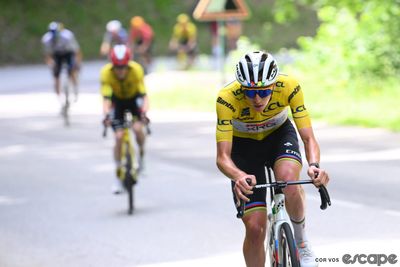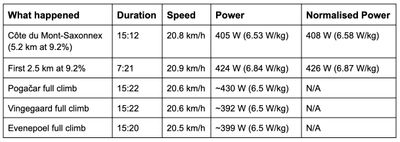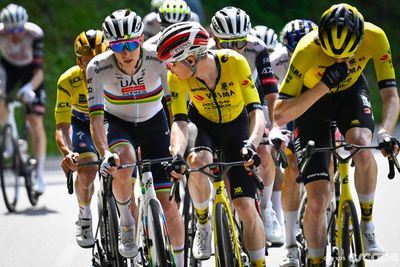
Adam Chamberlin
Head of digital development for Mackman Group. Aging consummate athlete attempting to run, bike and enjoy the outdoors.
Having worked in the cycling industry prior to a global pandemic I took up running to spend more time with my family. Since then I have caught the 'long run' bug and challenged myself.
Now back in the tech industry I am fascinated by using technology to help live a healthier and more sustainable life.
Day life is spent in WordPress and talking all things technical SEO.
hello@adamchamberlin.info
+447816905420
Head of Development
Mackman Branding
Hadleigh
Suffolk
United Kingdom
Liked 7 Wkg for 20 minutes Pogaars power ahead of the Tour is close to his best
Cor Vos

At last week's Critérium du Dauphiné, Tadej Pogačar added one of the increasingly few races he hadn’t won to his trophy cabinet. After getting things off to a perfect start with a win on stage 1, he then had, by his impeccable standards, a wobble in the TT, conceding time to his rivals. However, once the mountains arrived, he returned to winning ways with back-to-back wins on stages 6 and 7, blowing the competition out of the water and, in the process, showing that he's very much on track to win a third-straight Tour de France in July.
One rider who was one of the best at limiting his losses to the flying Slovenian was Norway’s Tobias Halland Johannessen (Uno-X Mobility). On stage 6, he was seventh, finishing just 13 seconds behind Remco Evenepoel and 2:03 down on Pogačar.
The following day, he went even better, finishing fourth. The time gap to Pogačar was larger at 2:26, but this time, he finished 13 seconds ahead of Evenepoel. By the time the race wrapped up, Johannessen would finish in fifth place, six minutes and 12 seconds behind Pogačar.
What is particularly of interest with Johannessen is that he publicly disclosed his power data from the race. That tells us what it takes to be one of the front-runners on the mountain stages of the Dauphiné, and crucially, allows us to estimate the power Pogačar is unleashing on the pedals, and the gap is between the Slovenian and his closest rivals.
The takeaway? The UAE Team Emirates-XRG captain is within reach of his 2024 Tour fitness. His rivals, while not far behind, have some work to do between now and when the race starts on July 5. Here's what we learned from the key June tuneup race:
Stage 6 - Pog Power
Permalink to heading Stage 6 - Pog PowerStage 6 was a very short stage at only 126.7 km. For the stage winner, Pogačar, this was dealt with in under three hours, even if there were 2,600 meters of elevation gain to contend with. Visma-Lease a Bike set an infernal pace on the penultimate climb of the day, the first category Côte du Mont-Saxonnex (5.5 km at 8.6%), before a long false-flat valley section to the base of the final climb.


Although not huge, the lead group on the road was large enough for leaders to shelter from the wind and keep fresh before the final climb of the day.
While the race profile split the final ascent into two discrete climbs – the Côte de Domancy (2.5 km at 9.4%) and the Côte de la Cry (2.7 km at 7.6%), divided by a less-steep middle section – it all blended into one 20-minute threshold effort.
The pace was immediately hot from the start. Johannessen stuck with the Pogačar/Vinegaard group for the first two minutes before settling into his rhythm and pacing himself perfectly for the rest of the climb to finish seventh on the day.

The first part of the climb, the Côte de Domancy, was the location of Pogačar’s brutal attack. Coming into the base of the climb, the pace was high, and as Johannessen’s data shows, hitting the climb did little to slow things down. Considering that around 9 kilometres remained of the climb, it took a 6.85 w/kg effort to hang on.